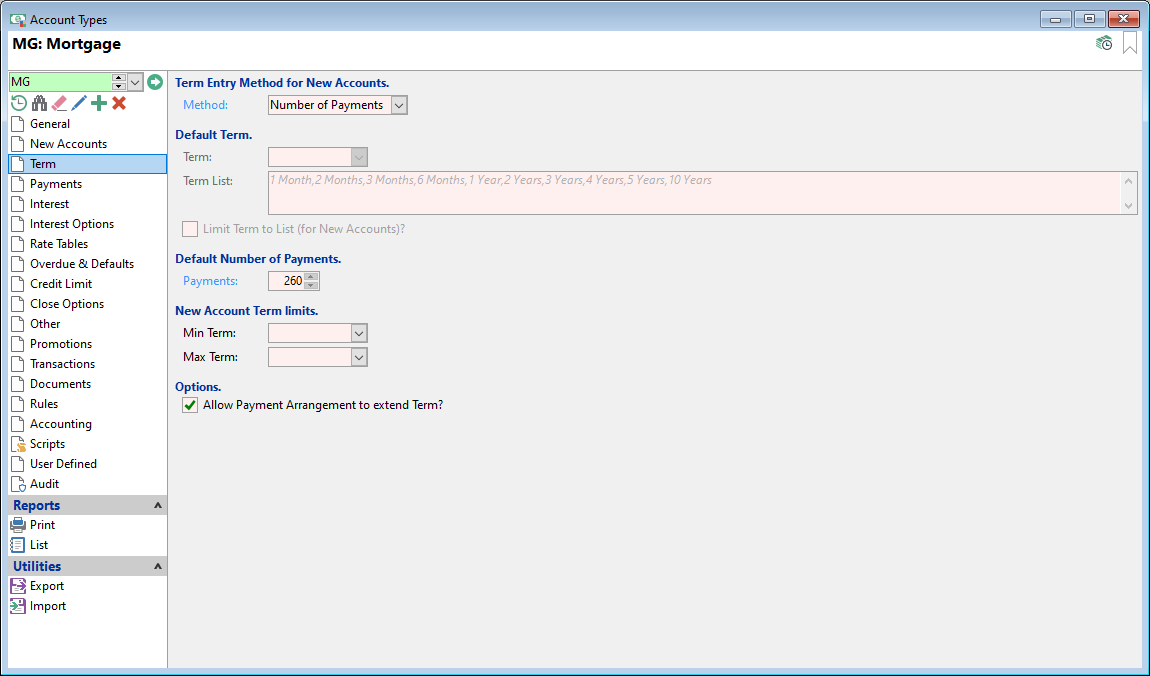
Method
Term - Select term to define the payment frequency within the specified term.
Number of Payments - Selecting number of payments will define the term based upon this.
Term
Define the term to default in the New Account Wizard.
Term List
Define a comma separated list of terms to default in the New Account Wizard.
Limit Term to List?
Check to limit the term selection to the defined list.
Payments
If term entry method is Number of Payments, define the default number of payments.
Minimum Term
Define the minimum term for new accounts of this Account Type.
Max Term
Define the maximum term for new accounts of this Account Type.
Allow Payment Arrangement to extend Term?
Check to allow the user to extend the term of an Account past the current Maturity date in the Payment Arrangement wizard.
In addition, there is a permission key to override this, ie to allow the user to proceed regardless of the Account Type setting. The permission key is Account.PaymentArrangementAllowFinalPostMaturity. Note, if the User is an Administrator, by definition they will be allowed all permissions, and therefore can always extend payments past the maturity date.
Note, if an Account is already past it's maturity date then it will always be past its maturity date.
Note, this setting does not apply to Payment Promises. However, it does apply to the Account Withdrawal wizard if the regular payment is changed.
Note, in addition to using this facility you can use Wizard Validator scripts in the Payment Arrangement and Withdrawal wizards to add more complex logic.